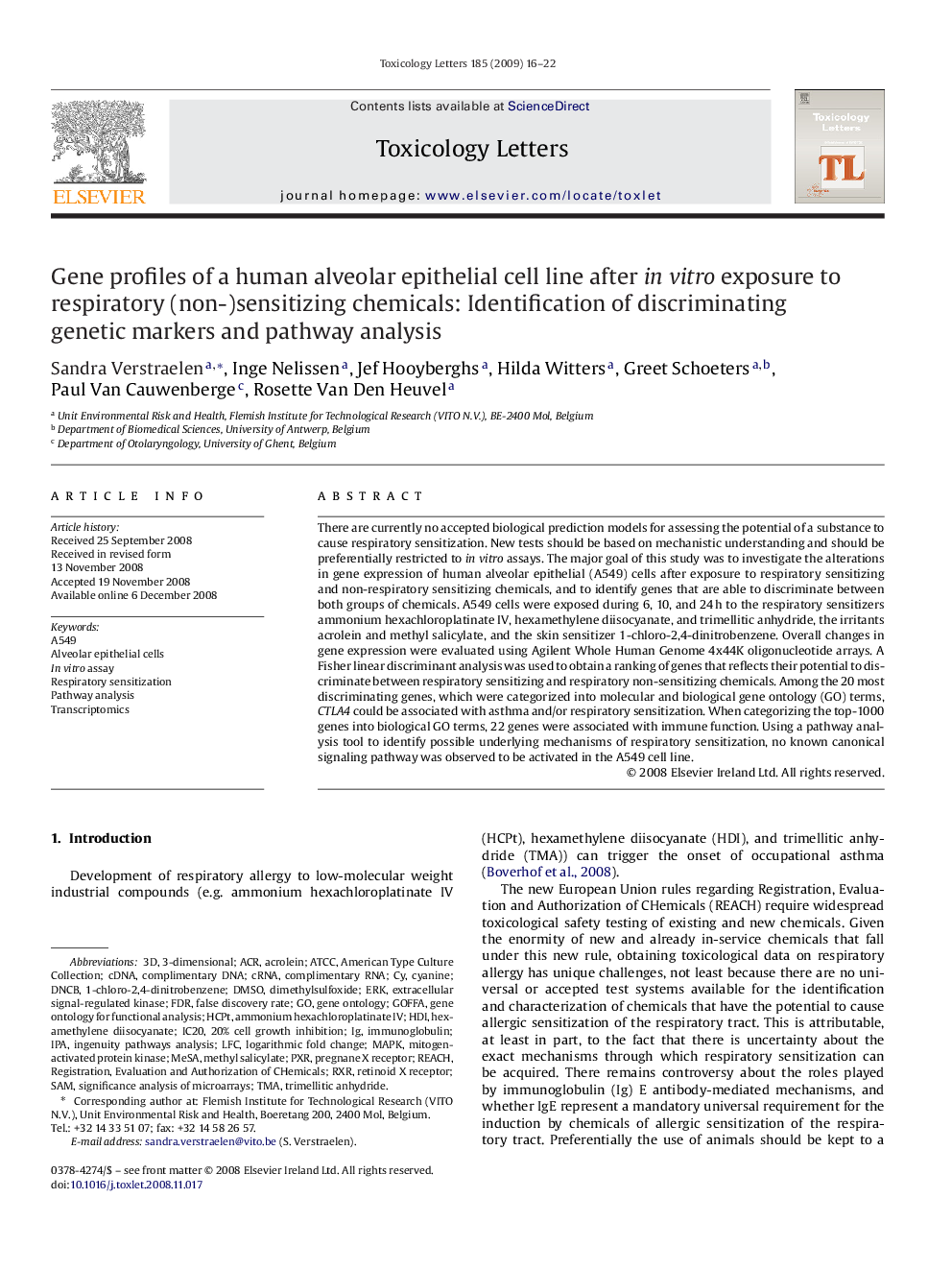| کد مقاله | کد نشریه | سال انتشار | مقاله انگلیسی | نسخه تمام متن |
|---|---|---|---|---|
| 2601140 | 1133302 | 2009 | 7 صفحه PDF | دانلود رایگان |

There are currently no accepted biological prediction models for assessing the potential of a substance to cause respiratory sensitization. New tests should be based on mechanistic understanding and should be preferentially restricted to in vitro assays. The major goal of this study was to investigate the alterations in gene expression of human alveolar epithelial (A549) cells after exposure to respiratory sensitizing and non-respiratory sensitizing chemicals, and to identify genes that are able to discriminate between both groups of chemicals. A549 cells were exposed during 6, 10, and 24 h to the respiratory sensitizers ammonium hexachloroplatinate IV, hexamethylene diisocyanate, and trimellitic anhydride, the irritants acrolein and methyl salicylate, and the skin sensitizer 1-chloro-2,4-dinitrobenzene. Overall changes in gene expression were evaluated using Agilent Whole Human Genome 4x44K oligonucleotide arrays. A Fisher linear discriminant analysis was used to obtain a ranking of genes that reflects their potential to discriminate between respiratory sensitizing and respiratory non-sensitizing chemicals. Among the 20 most discriminating genes, which were categorized into molecular and biological gene ontology (GO) terms, CTLA4 could be associated with asthma and/or respiratory sensitization. When categorizing the top-1000 genes into biological GO terms, 22 genes were associated with immune function. Using a pathway analysis tool to identify possible underlying mechanisms of respiratory sensitization, no known canonical signaling pathway was observed to be activated in the A549 cell line.
Journal: Toxicology Letters - Volume 185, Issue 1, 25 February 2009, Pages 16–22